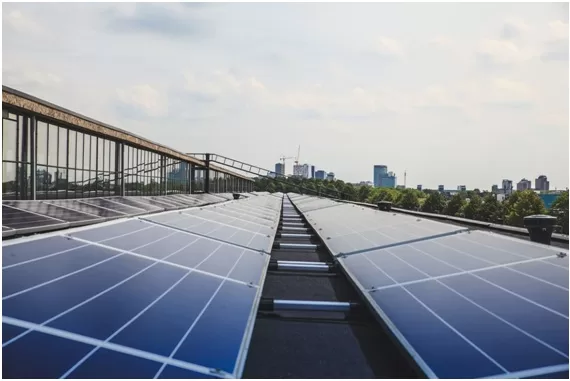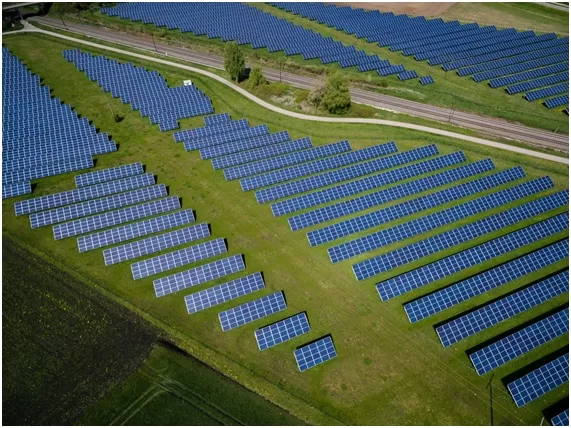Technology
Why Does Solar Power Keep Getting Better?

Investors showed a lot of interest in solar panel technology in the last decade. Prices came down to the point where the energy production method came of age, generating electricity cheaper than coal in many parts of the world.
What’s more surprising is that solar hasn’t been through the usual tech hype cycle. Unlike IoT or blockchain, there was no trough of despair. It just keeps getting better and better. Prices are coming down and its share in new power generation is continuing to increase, year-on-year, now outperforming coal, natural gas, and oil combined.
Fundamentally, the fuel is free. The sun’s light arrives every morning, giving generators the opportunity to convert power to electricity without having to mine any other resources.
The Quality Of Solar Panels
The long-term future of the solar energy generation industry largely relies on the quality of panels (unless innovators can develop new ways to harness the sun’s energy). That’s because rolling costs are minimal. Once installed, solar collecting equipment continues to produce energy with low to zero on-running maintenance and fees. What matters is the quality of the equipment, not the labor force to support it, or the servicing.
Jenya Meydbray, the founder of PVEL, a company that rates solar electric systems on behalf of investors, makes this point clear by analogy. He compares solar panels to children’s toys left out in the sun for a year. If you leave plastic out in direct UV, eventually, the radiation will break it down, causing it to disintegrate into smaller and smaller parts. Over time, plastic simply turns into harmless carbon and derivatives.
The same is true of solar panels. Eventually, the sun’s light (which they are designed to collect) destroys the polymers and organic compounds they contain, curtailing their serviceable life. And that’s the real limiting factor in the solar industry. Panels are expensive but they don’t last forever. Installers need to replace them every twenty to thirty years, using present technology.
Interestingly, though, things could change. Thanks to new materials, photovoltaics could last considerably longer than they do right now. Thin crystal silicon panels could reduce the long-term costs of capital-intensive installations, making them even more popular among energy generators.
For this reason, investors are learning that material quality is the most important factor when considering a solar-related investment. Firms that can reduce their levelized costs by extending the life of their products are likely to win in the marketplace.
The Cost Of Silicon
In many ways, the underlying design and technology involved in producing a solar panel haven’t changed much in the last ten years. Panels are still rectangular pieces of crystalline solar cells glued to glass and bolted to a rack, then connected to an inverter.
However, even though the basic design is the same, the industry has made many refinements. Meydbray likens this to what happened in the car industry between 2000 and 2020. While engine designs didn’t change in terms of their fundamentals, efficiency improvements were considerable. The average driver can now eke around 20 to 30 percent more mileage out of the same tank of fuel, compensating for rising gas prices.
The same is happening in the solar panel market. The price of various inputs and manufacturing processes is collapsing, leading to the tremendous reductions in prices seen over the last twelve to fifteen years.
Take the price of silicon, for instance. In 2010, a kilo of the material cost manufacturers $400 at wholesale prices. By 2019, that was down to just $10 per kilo, and prices continue to fall to this day.
The lowering of prices is making all sorts of new applications of solar panels possible. In the 1990s, homeowners wouldn’t have been able to afford solar outdoor lights for their gardens, but now the prospect is entirely within reach.
The same goes for cars with solar panels built into their roofs. In the past, the costs would have been too great. But with advances in technology and lower raw input prices, it’s now economically feasible for most manufacturers to implement.
Technology Isn’t Impacting Costs As Much As People Imagine

Source: Unsplash
Meydbray points out that technological advances at the panel level are actually having a surprisingly small effect on costs. For the last ten years, panel thickness has remained at around 180 microns, and there doesn’t appear to be any way to reduce it without harming yields.
He also points out that the absolute efficiency of crystal silicone is going up by around 0.5 percent per year. And while that isn’t much over the course of a decade, it could have significant implications on solar panel efficiency if it continues for another forty to fifty years.
Other cost-cutting technologies are also coming online. For instance, a new technique called “half-cut cells” is helping to add watts to each panel. Here, manufacturers are cutting cells in half to reduce their current. The smaller the current in each cell, the lower the resistive losses and the higher the overall output of the panel.
Strangely, though, most of the gains in solar panel technology are coming out of China. While the country is failing economically on many fronts, its cell manufacturers started experimenting with new cell technology that reflected light going through the cell back into it, helping to yield efficiencies of 20 percent, a milestone for the industry.
Germany also played a role, too. Meyer Burger’s cell manufacturing machines started producing Chinese reflective panels in bulk. Then, other solar panel-making machine manufacturers figured out how to do it, bringing down the price even further.
The Rise Of Bifacials

Source: Unsplash
Solar panel technology also keeps getting better because of bifacials. These are exactly what you would expect: solar panels that can generate electricity by collecting solar energy from both sides. To collect the extra sunlight, manufacturers must place these panels on tall steel racks. These add to the cost slightly, but lead to significant efficiency gains over the long term, making them a great option for producers looking to generate energy at scale.























































